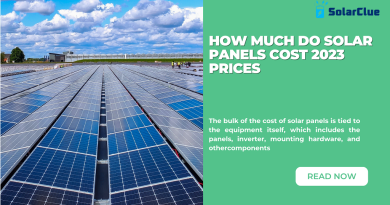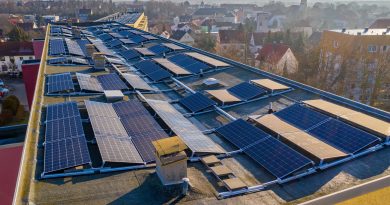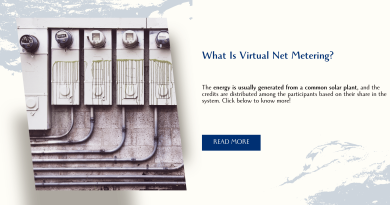how to get solar panel for home
As the demand for renewable energy grows in India, solar power has emerged as a popular and viable option for homeowners. However, purchasing solar panels involves careful consideration of various factors that influence costs and overall system performance. This guide provides a detailed overview of everything you need to know when purchasing solar panels for your home in India, including costs, government incentives, financing options, and more.
Table of Contents
- 1 Factors Affecting Solar Panel Prices
- 2 Government Subsidies and Incentives
- 3 Financing Options
- 4 Cost Trends in the Indian Solar Market
- 5 Comparing Solar Energy Costs to Traditional Electricity
- 6 Tips for Getting the Best Price
- 7 The Impact of Panel Size and Wattage on Cost
- 8 Installation Costs and Regional Variations
- 9 Understanding Payback Periods and ROI
- 10 The Future of Solar Panel Costs in India
- 11 Evaluating Solar Panel Manufacturers and Suppliers
- 12 The Importance of Proper Installation and Maintenance
- 13 Addressing Common Misconceptions About Solar Panel Costs
- 14 Table: Cost Comparison of Different Solar Panel Types
- 15 FAQs
- 16 Conclusion
Factors Affecting Solar Panel Prices
Several key factors contribute to the overall cost of solar panels in India:
- Panel Type:
- Monocrystalline panels are more efficient and compact but are the most expensive.
- Polycrystalline panels are slightly less efficient but more affordable.
- Thin-Film panels are the least efficient but are lightweight and can be cheaper.
- Wattage:
- Higher wattage panels generate more electricity and typically cost more. However, they can be more cost-effective in the long run, especially if you have limited roof space.
- Brand:
- Established brands like Tata Power Solar, Vikram Solar, and Adani Solar often charge a premium for their reputation, quality, and warranty offerings.
- Installation Complexities:
- The complexity of your roof, its orientation, height, and the type of mounting system required can affect installation costs.
- Location:
- The amount of sunlight your location receives, local labor costs, and regional regulations can influence the overall cost of installing solar panels.
Government Subsidies and Incentives
The Indian government offers several incentives to encourage the adoption of solar energy:
- Central Government Subsidy:
- The Ministry of New and Renewable Energy (MNRE) provides a subsidy of up to 40% for residential rooftop solar systems up to 3 kW, and 20% for systems between 3 kW and 10 kW.
- State-Level Incentives:
- States like Gujarat, Maharashtra, and Tamil Nadu offer additional subsidies, net metering benefits, and tax rebates.
- Accelerated Depreciation:
- Businesses can benefit from accelerated depreciation, which allows them to depreciate the value of the solar system quickly, reducing taxable income.
Financing Options
Various financing options can help make solar panel systems more affordable:
- Solar Loans:
- Many banks and financial institutions offer loans specifically for solar installations, often at lower interest rates.
- Leasing:
- Solar leasing allows you to rent solar panels for a fixed monthly fee, avoiding the upfront cost of purchasing the system outright.
- Power Purchase Agreements (PPA):
- Under a PPA, a third-party company installs and maintains the solar panels on your property, and you pay for the electricity generated at a rate lower than grid electricity.
Cost Trends in the Indian Solar Market
The cost of solar panels in India has been decreasing steadily, driven by technological advancements, increased manufacturing, and supportive government policies.
| Year | Average Cost per Watt (₹) |
|---|---|
| 2018 | ₹50 – ₹55 |
| 2020 | ₹40 – ₹45 |
| 2022 | ₹35 – ₹40 |
| 2024 (Projected) | ₹25 – ₹30 |
Comparing Solar Energy Costs to Traditional Electricity
While the initial investment in solar panels can be high, the long-term savings compared to traditional electricity make solar an attractive option.
| Comparison Factor | Solar Energy | Traditional Electricity |
|---|---|---|
| Cost Over Time | Decreases after payback period | Increases due to fuel and inflation |
| Environmental Impact | Minimal, renewable energy source | High carbon emissions |
| Energy Independence | Reduces reliance on the grid | Dependent on utility companies |
Tips for Getting the Best Price
- Compare Multiple Quotes: Get quotes from different installers to ensure competitive pricing.
- Utilize Government Subsidies: Maximize savings by taking full advantage of available subsidies and incentives.
- Choose the Right Panel Type: Select a panel that balances efficiency with your budget and energy needs.
- Negotiate Installation Costs: Some installers may offer discounts or flexible payment plans.
- Consider Long-Term Value: Investing in high-quality components like inverters and mounting systems can lead to better performance and durability.
The Impact of Panel Size and Wattage on Cost
Larger panels with higher wattage ratings tend to be more expensive but offer better energy production, which can lead to quicker payback periods and higher ROI.
Installation Costs and Regional Variations
Installation costs can vary significantly based on your location due to differences in labor costs, availability of skilled installers, and local regulations. Urban areas may have higher installation costs, while rural areas might offer lower costs but could require more logistical planning.
Understanding Payback Periods and ROI
The payback period is the time it takes for the savings on your electricity bills to equal the cost of the solar panel system. ROI (Return on Investment) measures the profitability of your solar investment.
Example Calculation:
- System Cost: ₹2,50,000
- Annual Savings: ₹35,000
- Payback Period: ₹2,50,000 / ₹35,000 ≈ 7.14 years
- ROI: (₹3,50,000 – ₹2,50,000) / ₹2,50,000 × 100 = 40% over 10 years
The Future of Solar Panel Costs in India
The cost of solar panels in India is expected to continue decreasing due to technological advancements, increased competition, and supportive government policies. These factors are likely to make solar energy even more accessible to the average Indian household.
Evaluating Solar Panel Manufacturers and Suppliers
When choosing solar panels, consider the following:
- Reputation: Research the reputation of the manufacturer and read customer reviews.
- Warranty: A longer warranty period indicates confidence in the product’s durability and performance.
- Certifications: Ensure that the panels are certified by recognized bodies like the Bureau of Indian Standards (BIS) or the International Electrotechnical Commission (IEC).
The Importance of Proper Installation and Maintenance
Proper installation is crucial for maximizing the efficiency and lifespan of your solar panel system. Ensure that your installer is experienced and follows best practices, including:
- Correct Panel Orientation and Tilt: Panels should be oriented and tilted to maximize sunlight exposure.
- Secure Mounting: The mounting system should be sturdy enough to withstand harsh weather conditions.
- Regular Maintenance: Periodic cleaning and inspections can help maintain the efficiency of your panels.
Addressing Common Misconceptions About Solar Panel Costs
Myth: Solar panels are too expensive for the average homeowner.
- Fact: Government subsidies, financing options, and long-term savings make solar panels an affordable investment.
Myth: Solar panels don’t work well in cloudy or rainy climates.
- Fact: Solar panels can still generate electricity on cloudy days, although at reduced efficiency. Battery storage can help mitigate this.
Table: Cost Comparison of Different Solar Panel Types
| Panel Type | Wattage Range | Efficiency Range | Cost per Watt (₹) | Ideal Use Case |
|---|---|---|---|---|
| Monocrystalline | 300W – 400W | 18% – 22% | ₹25 – ₹30 | High-efficiency needs |
| Polycrystalline | 250W – 350W | 15% – 18% | ₹20 – ₹25 | Budget-conscious buyers |
| Thin-Film | 150W – 250W | 10% – 12% | ₹15 – ₹20 | Specific applications |
FAQs
1. How much does it cost to install solar panels in India in 2024?
- The cost of solar panels in India for 2024 ranges from ₹25 to ₹30 per watt. A typical 5kW system might cost between ₹1,25,000 and ₹1,50,000 before subsidies.
2. What factors influence the cost of solar panels?
- Factors include panel type, wattage, brand, installation complexity, and regional labor costs.
3. Are there government subsidies available for solar panel installations?
- Yes, the Indian government offers subsidies through the MNRE, covering up to 40% of the cost for small rooftop systems.
4. How long does it take to recoup the investment in solar panels?
- The payback period typically ranges from 5 to 8 years, depending on system size, location, and energy consumption.
5. What are the benefits of solar energy compared to traditional electricity?
- Solar energy offers lower long-term costs, minimal environmental impact, and increased energy independence.
Conclusion
Purchasing solar panels for your home in India involves careful consideration of various factors, including panel type, costs, government incentives, and installation complexities. By understanding these aspects, you can make an informed decision that maximizes your investment in solar energy, leading to long-term savings and environmental benefits.



